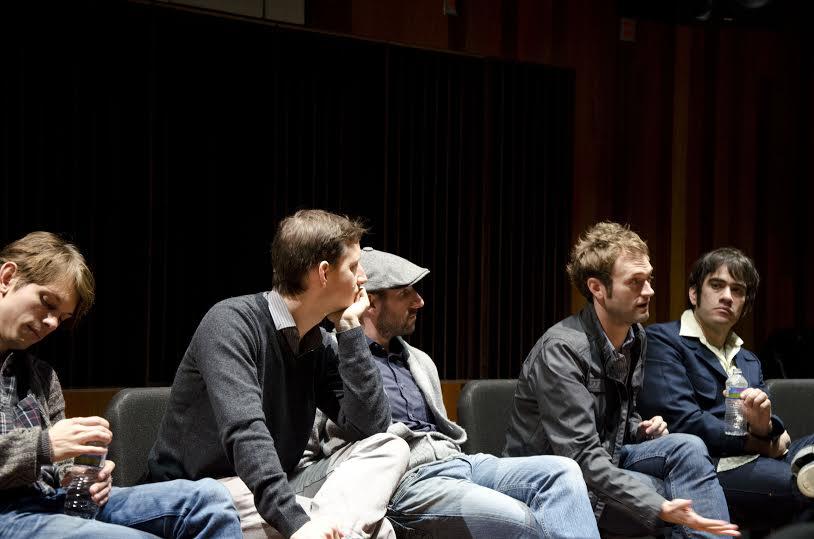Collaboration and “Crazy Chords”: Punch Brothers Talk Artistic Vision
Singer and mandolinist Chris Thile speaks during a panel session with Punch Brothers Tuesday afternoon. The band answered questions about their creative process and offered advice to young musicians.
December 6, 2013
What is artistic vision? How can we access it in our music, in our lives? Punch Brothers may have a few answers.
On Monday afternoon, the five-piece bluegrass band gathered in Stull Hall to talk creativity, composition and ambition, but they didn’t neglect to play a few of their wildly creative, intricately composed and intellectually ambitious songs for the audience of musicians and fans.
Based out of Brooklyn, Punch Brothers are here at Oberlin for a performance and improvisation residency during which they plan to compose plenty of new music. The group has come out with four records since forming in 2006, each showcasing a different aspect of their divergent style. Beyond technical skill, the group has an artistic vision that blends the distinct tastes of singer and mandolin player Chris Thile, violinist Gabe Witcher, bassist Paul Kowert, banjo player Noam Pikelny and guitarist Chris Eldridge, OC ’04.
“The reason for being in a band is that you love what you get from those five combinations,” Thile said.
During their presentation at the Conservatory titled “Developing and Executing Artistic Vision,” the group stressed the importance of communication in creating art collectively. According to Witcher, the members all have similar musical backgrounds, and that similarity was essential for formulating a cohesive band. But just as important as their commonalities was the individual perspective each member introduced to the band; these differing approaches allowed them to stretch their creative vision, and is perhaps why the band has such eclectic influences that range from classical to bluegrass.
Thile said their inspiration comes from the process of discussing musical likes and dislikes. Eldridge (his bandmates fondly call him “Critter”) suggested that each member contributes ideas that play to their own strengths. “It’s essential”, Thile said, “To determine which aspects of your favorite pieces you would do differently and apply that thinking to the piece being created.” Life lessons came into play, too; Thile warned that creative people have a tendency to apply this type of artistic revision to their loved ones. For best results, he advised, stick to the music.
An audience member asked if they planned to do something as ambitious as 2007’s “The Blind Leaving the Blind” — a song NPR described as “part modern chamber music and part song cycle” — in the future. Thile affirmed that much of that “reckless ambition” will appear in their next project, but he wants to strike a better balance between ambition and comfort.
“Surprise and satisfaction coexist perfectly in instances of great music,” he explained before launching into a full-on music history lesson for the uninitiated. Concerning the new trend of atonal, complicated music, Thile said that it is essential for artists to try to engage listeners’ emotions and bodies as well as their minds.
The band then launched into a demonstration of this concept by playing a new, as yet untitled song of theirs. After Witcher played a long, slow note on the fiddle with Thile singing, Eldridge began with hammering chords and then transitioned into uplifting, shimmering picking of the strings. Then, as Thile put it, they introduced the “crazy chords” that made the song surprising as well as moving. To wrap up the session, Punch Brothers played “New York City” off of their most recent album, Who’s Feeling Young Now?

























